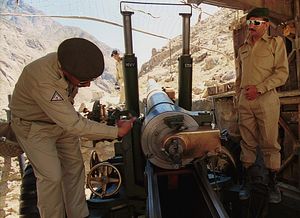In February 2019, the threat of war in South Asia appeared imminent for the first time in over a decade. For the first time since 1971, India and Pakistan traded cross-border airstrikes; they also engaged in conventional clashes not seen since the 1999 Kargil War.
The latest crisis was triggered by a vehicle-borne IED attack on a convoy of paramilitary forces in the Pulwama district of Indian-administered Kashmir. India attributed the terrorist attack to the Pakistan-based group Jaish e-Mohammad (JeM) and on February 26, claimed to successfully conduct airstrikes on a JeM training camp in Pakistani territory around Balakot, Khyber Pakhtunkhwa. The next day, Pakistan’s air force conducted a retaliatory strike across the Line of Control (LoC) that resulted in an air battle, with the downing of an Indian fighter jet and the capture of an Indian Air Force (IAF) pilot.
Exact details are still lost in the fog of crisis and several questions remain: How much of the Pulwama terrorist strike was planned out of Pakistan? What operational and intelligence security failures allowed India to fall prey to the attack in one of its most heavily guarded regions? What did India actually hit at Balakot and how long did they manage to fly in Pakistan airspace undetected? What was the intended target of Pakistan’s retaliatory strike and did it lose an F-16 in the process?
While the speedy return of the captured IAF pilot opened a path to de-escalation, Balakot became the latest addition to a growing list of India-Pakistan crises. The Balakot attack occurred in the lead-up to the Indian general elections, and at a time of growing uncertainty over how the two countries and the international community would react to escalation on the subcontinent. It also served as a timely reminder of instability in South Asia and the dangers of India and Pakistan’s tenuous relationship.
Poignantly, May marks the 20th anniversary of the Kargil War – the first actual hot war between nuclear powers – in which India and Pakistan fought each other for nearly three months in the Kargil Sector of the disputed Kashmir territory. This latest clash underscores the importance of closely reviewing what happened at Kargil in order to better understand and anticipate the contours of strategy and escalation in future India-Pakistan conflicts.

































